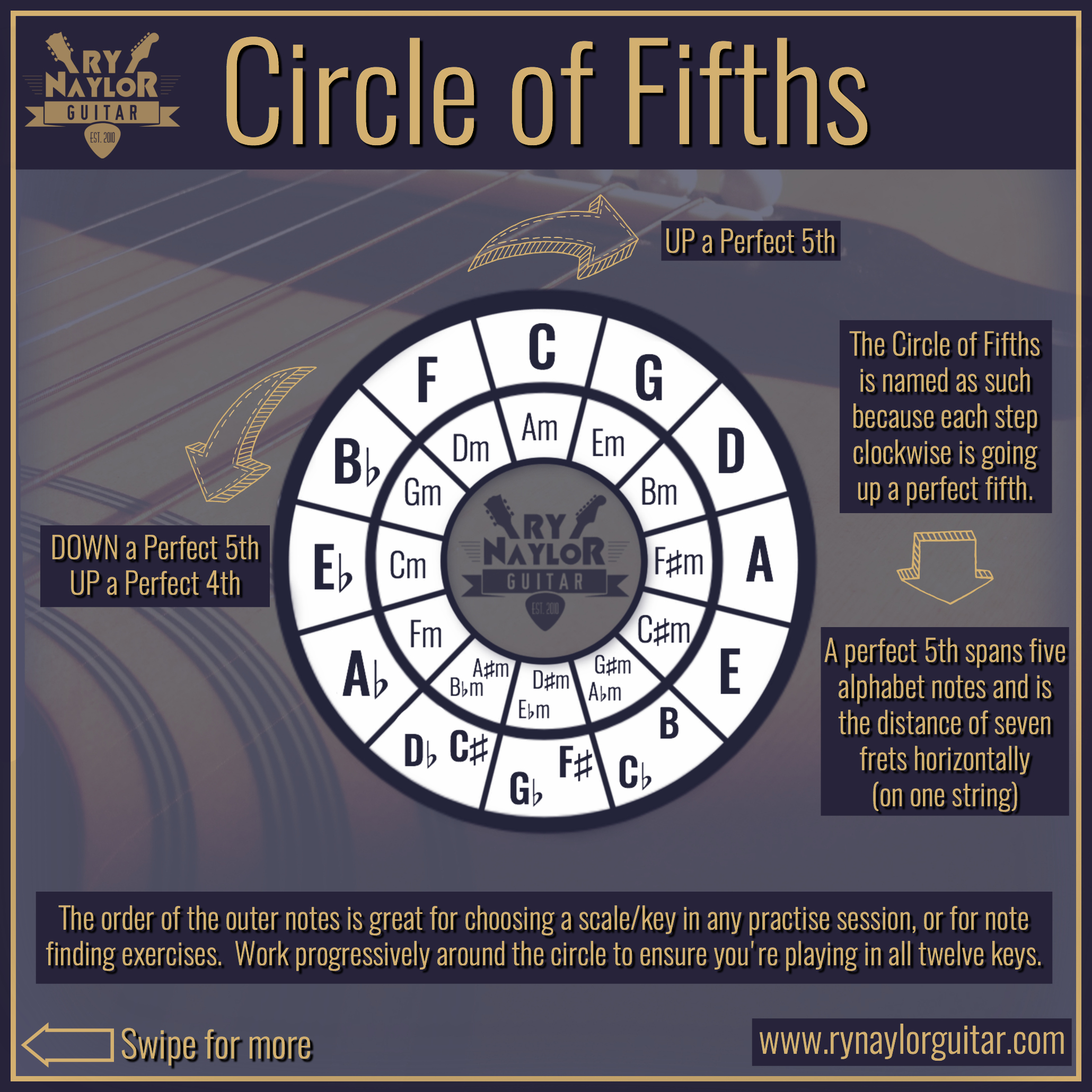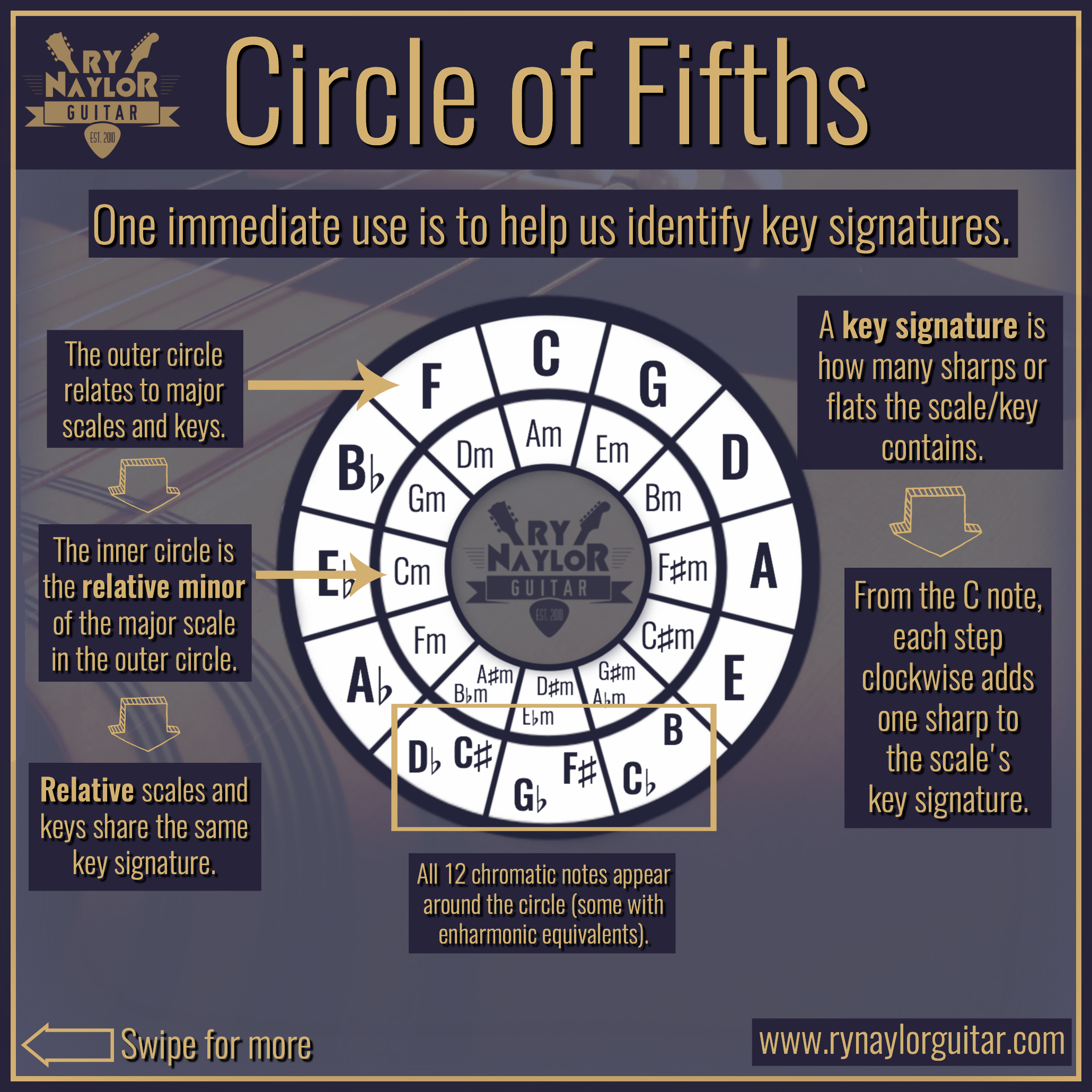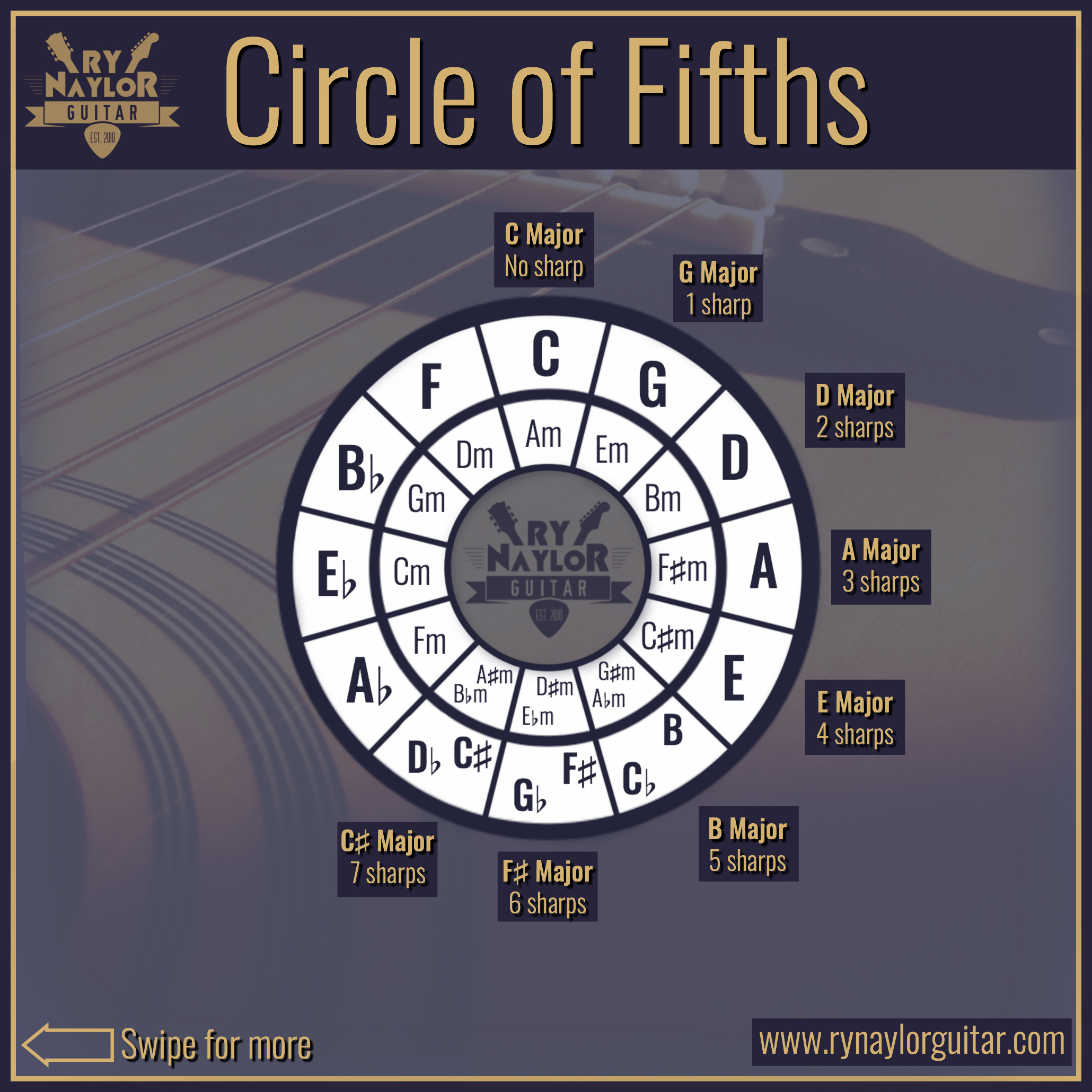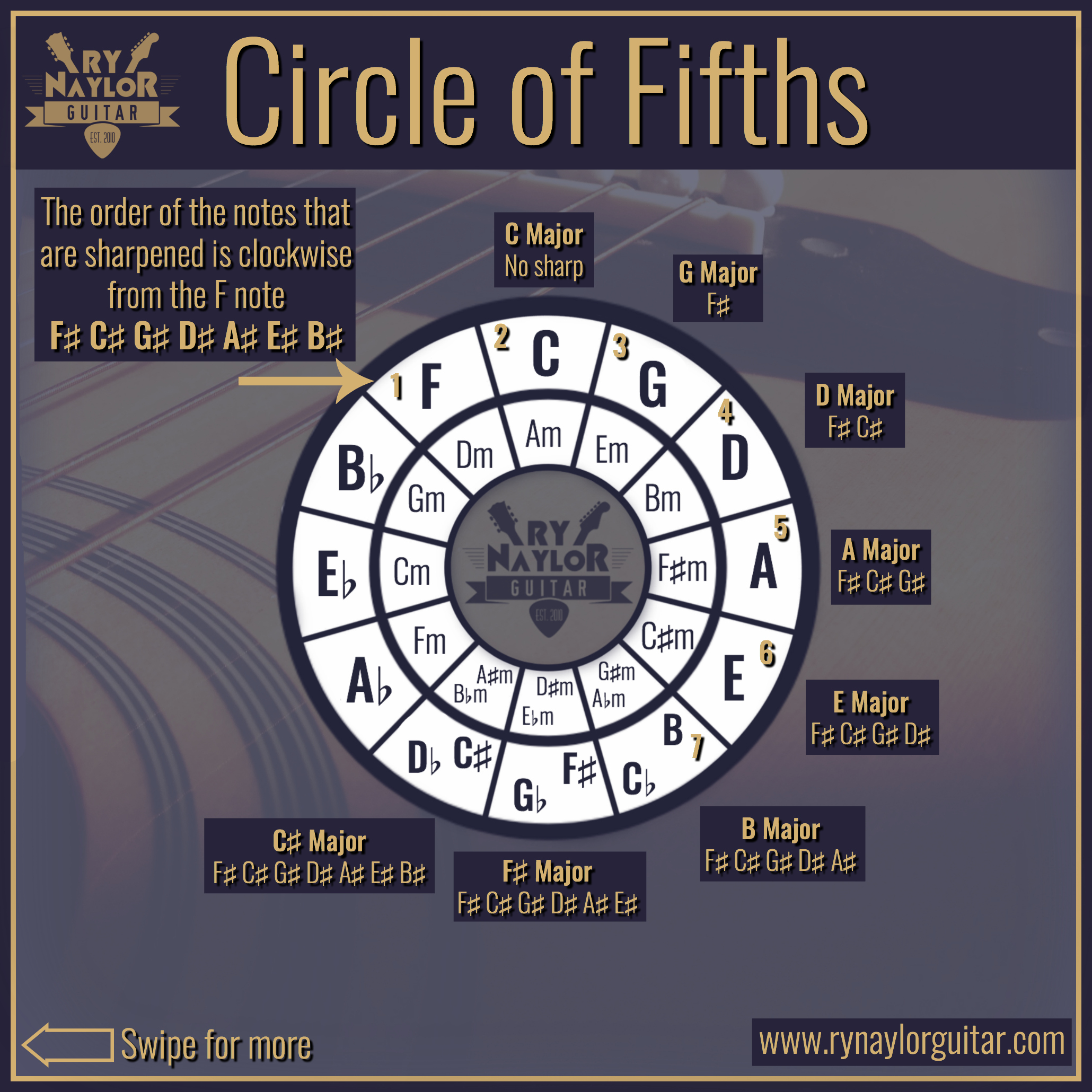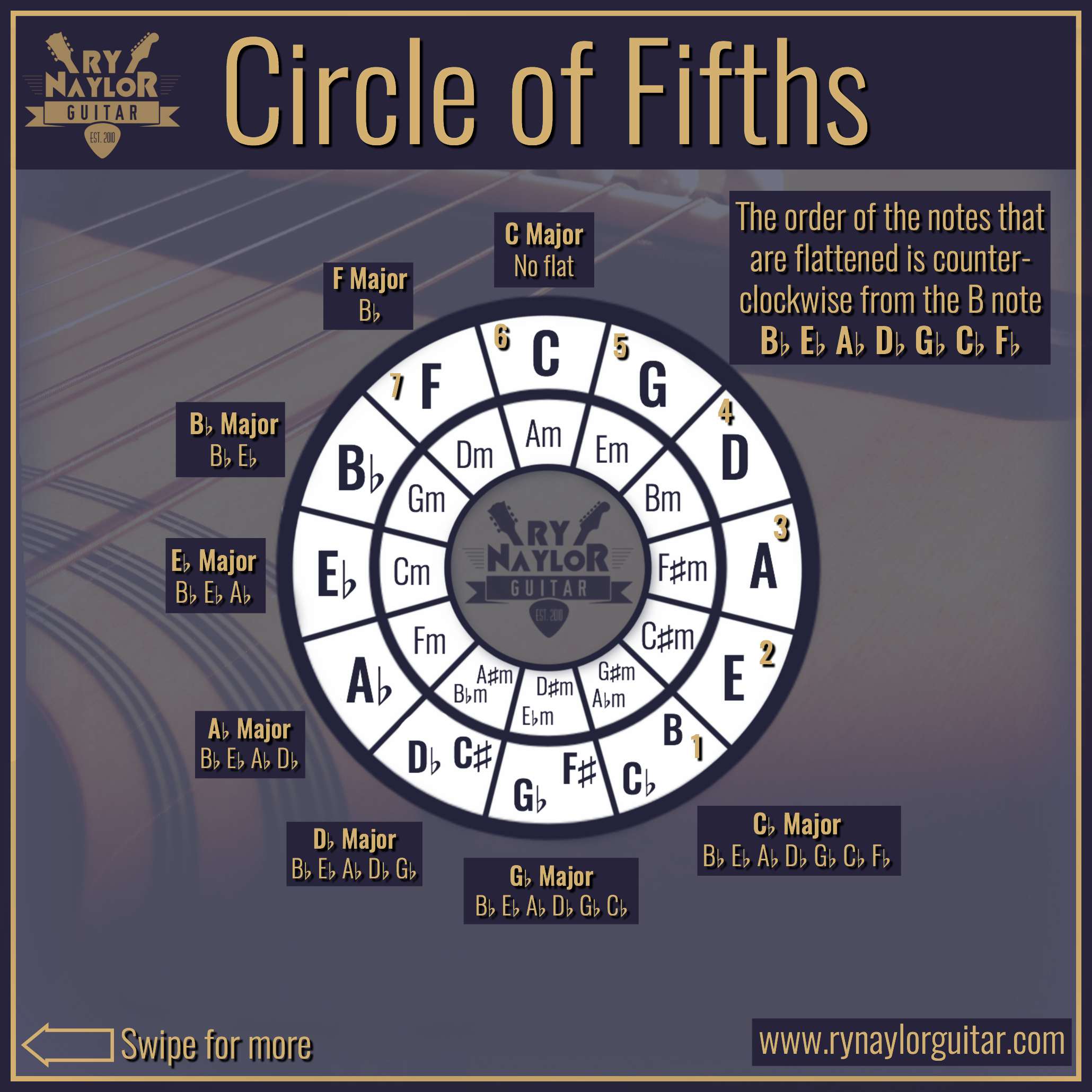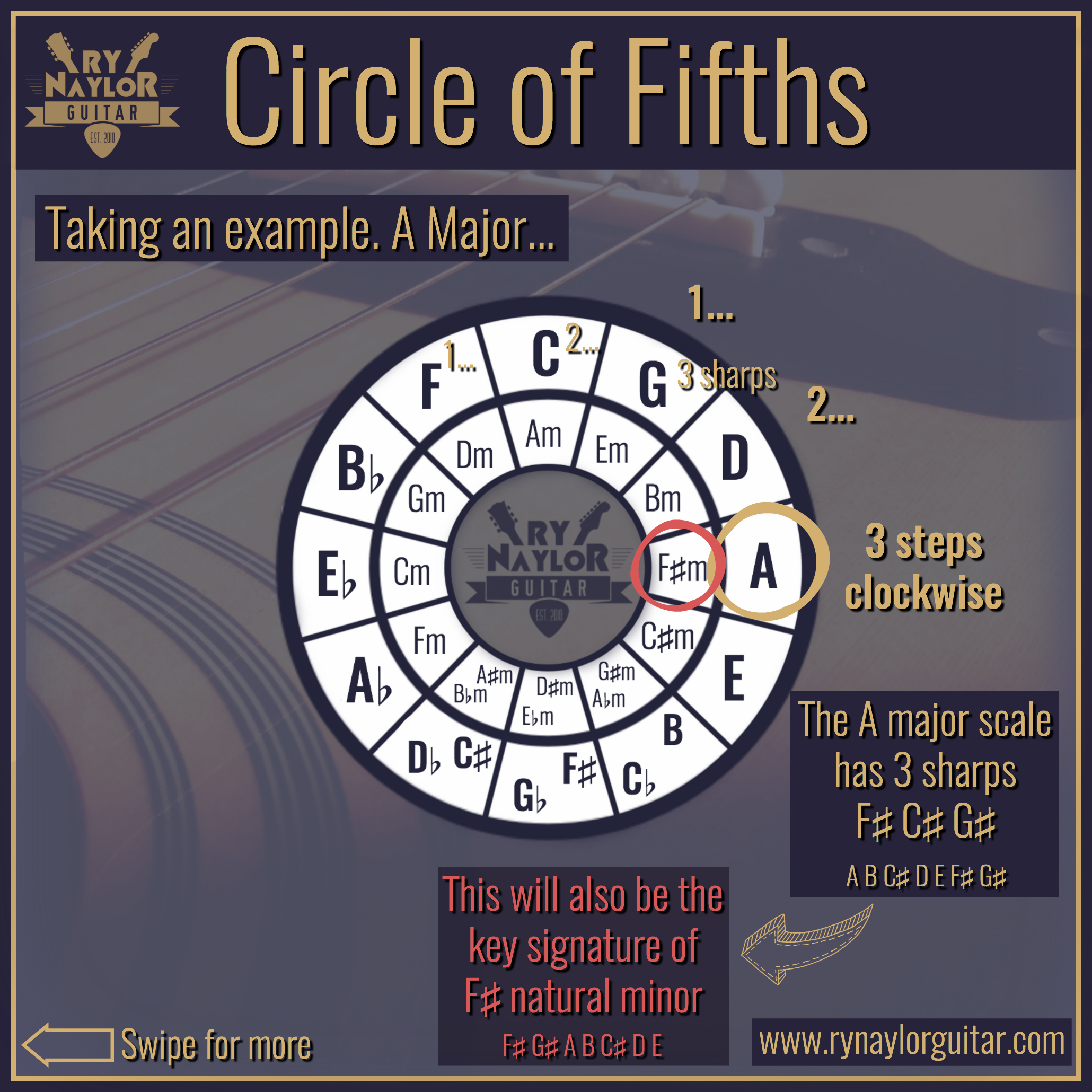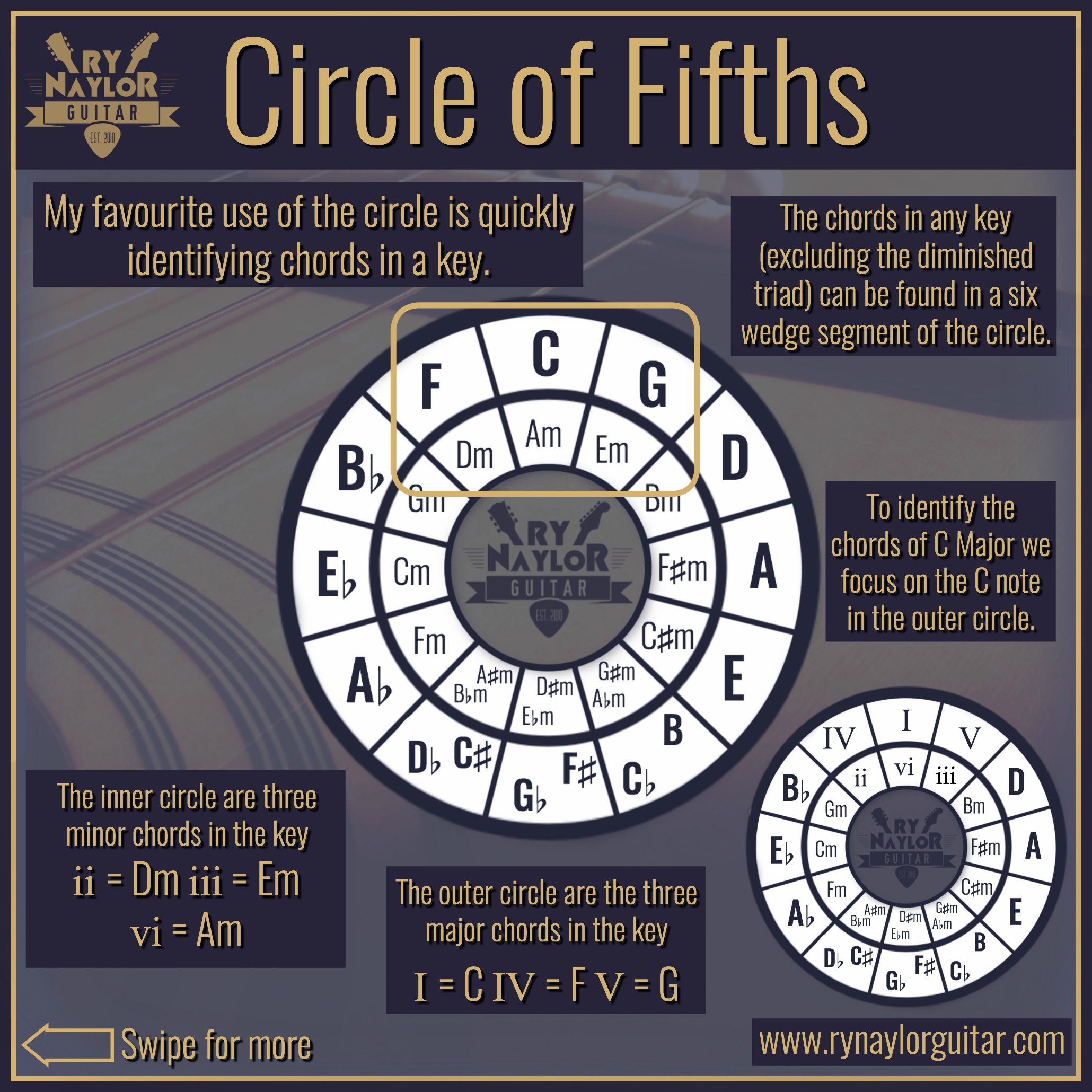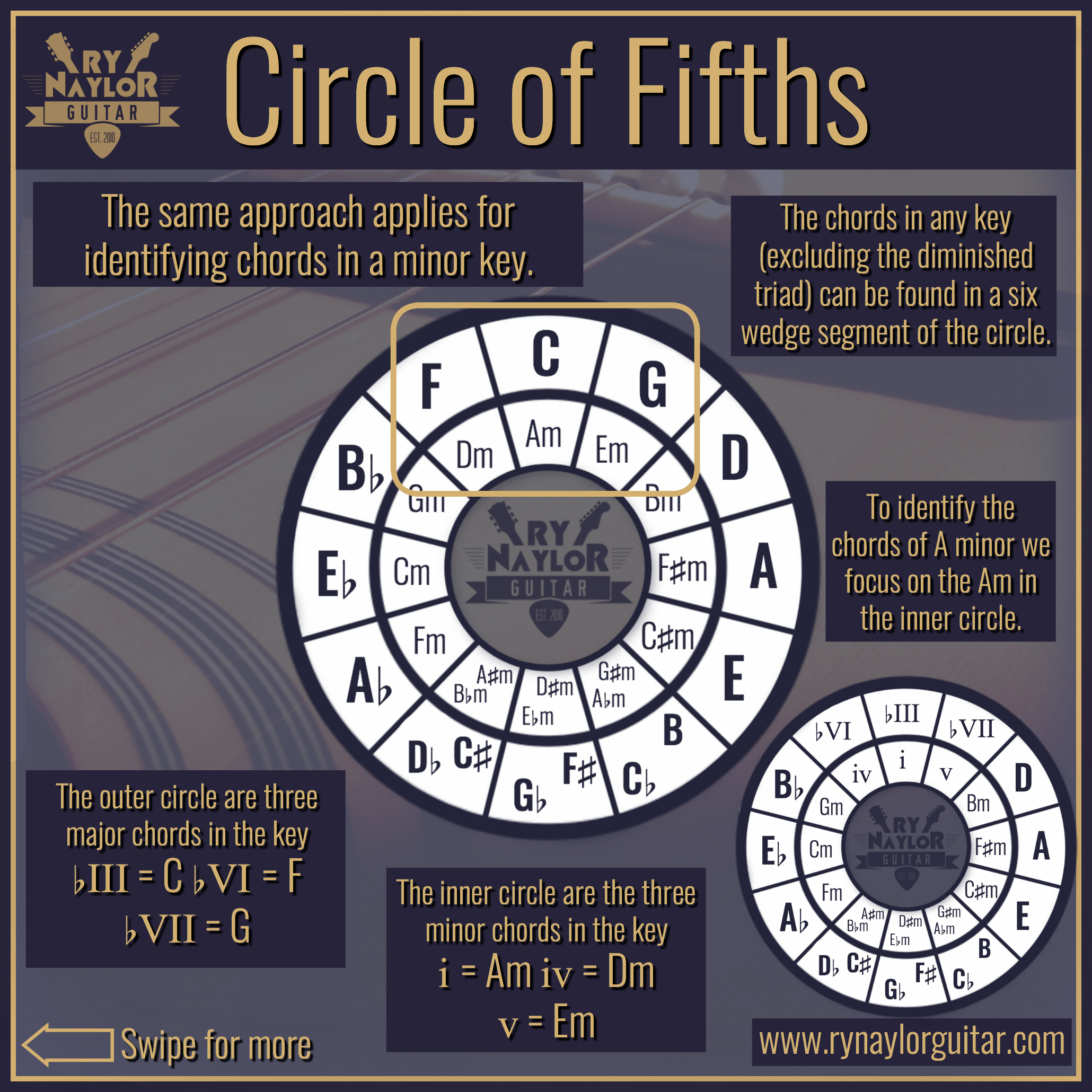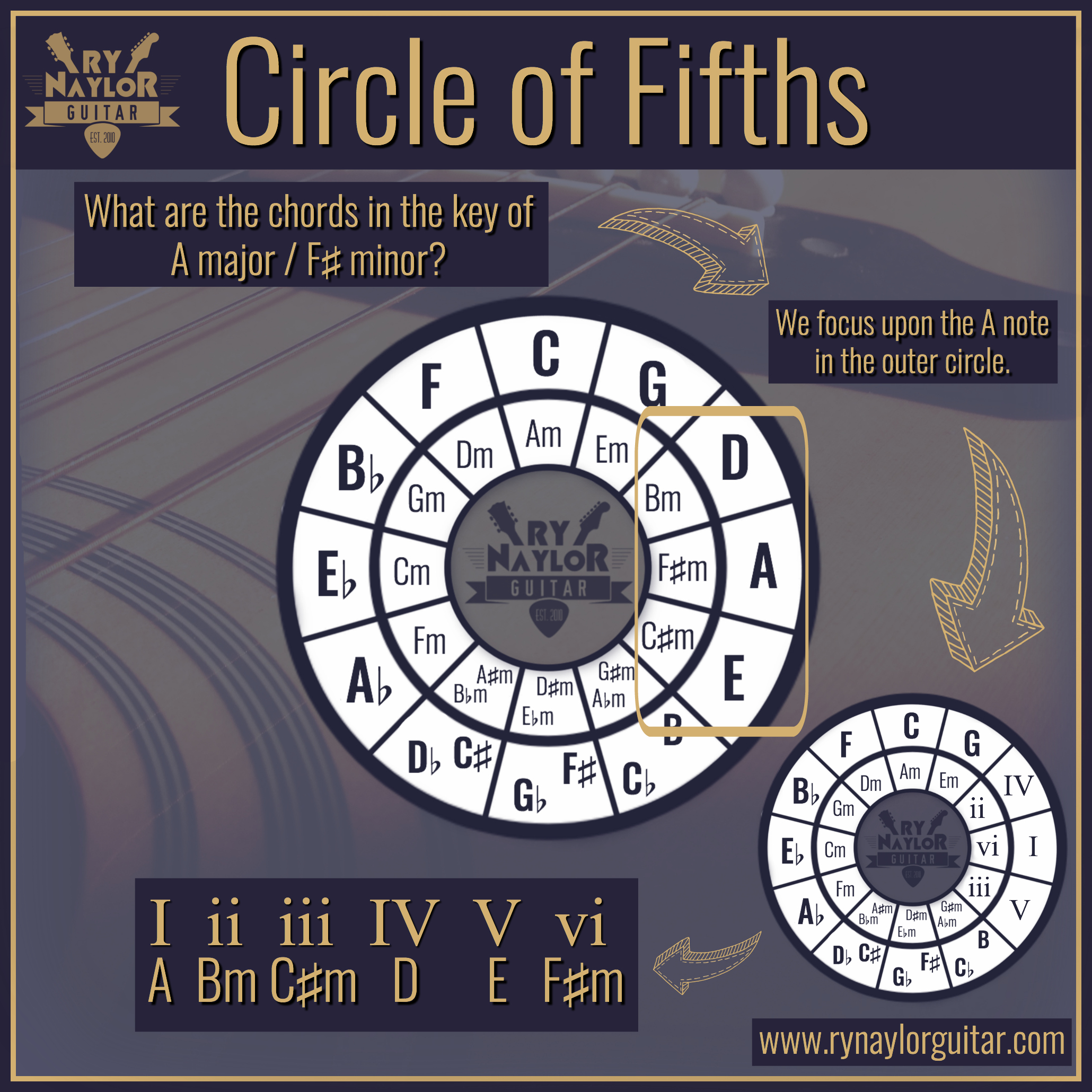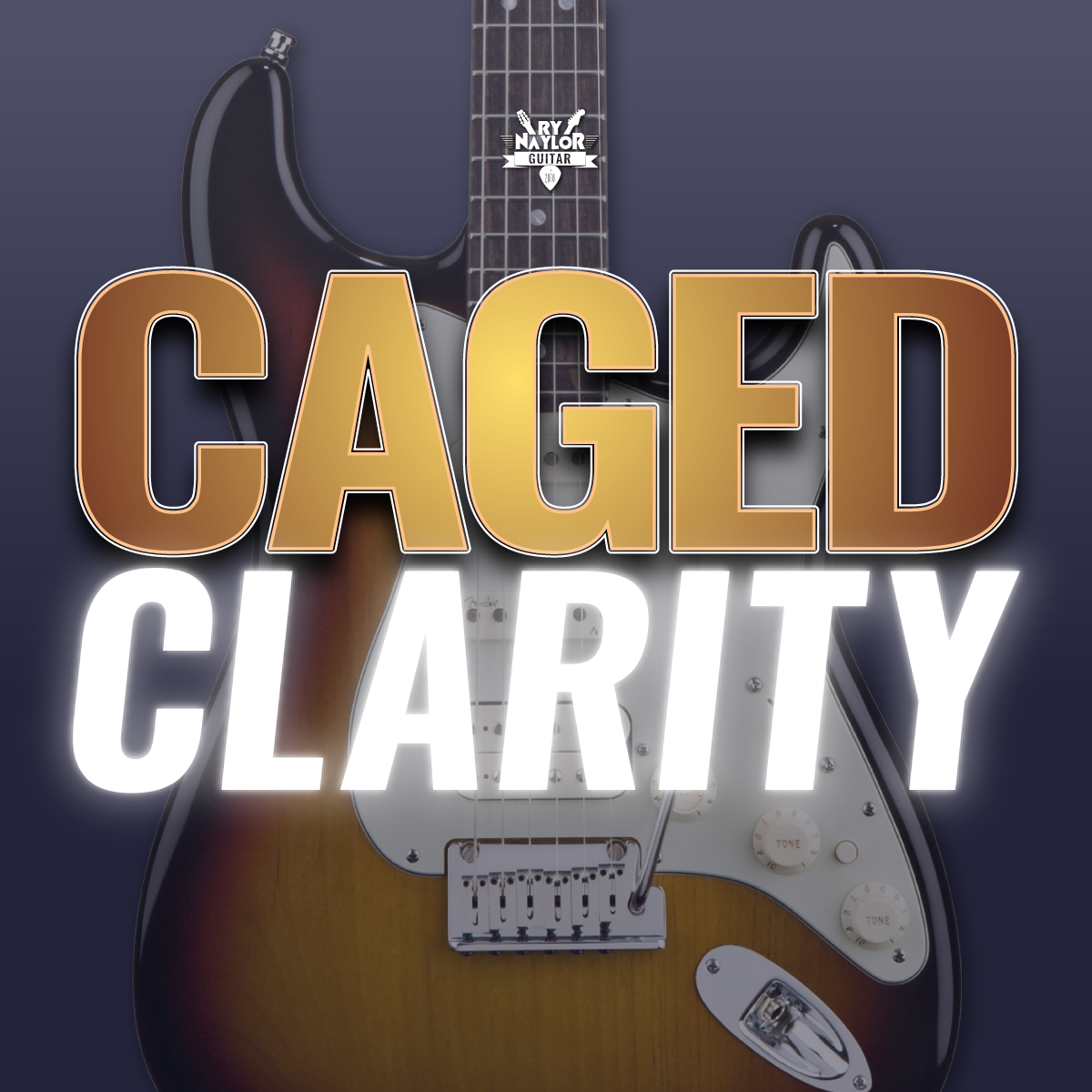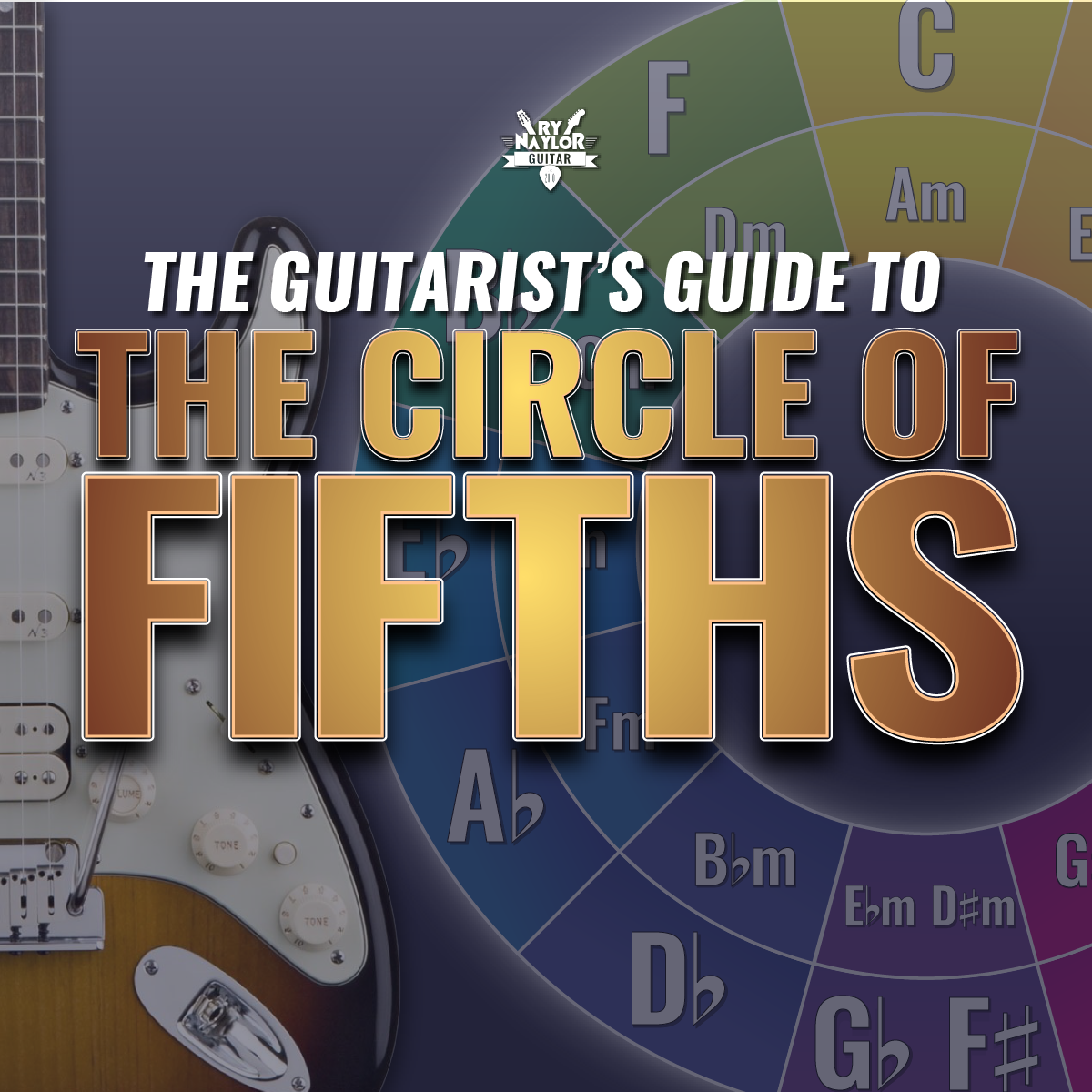The Circle of Fifths for Dummies | Guitar Music Theory
/In this video, I’m sharing some content from my guitar music theory course ‘Guitar Rut Busters: Essential Theory’. I’ll explain exactly what the circle of fifths is and how we can use it. Think of this as the circle of fifths for dummies.
The circle of 5ths is essentially what it says on the tin! It is a circle of notes which (through each clockwise step around the circle) goes up the distance of a perfect 5th. The perfect 5th spans 5 alphabet letters and is the distance of 3 whole steps plus 1 half step (or 7 frets horizontally).
If we continue around the circle of fifths we eventually return back to our starting note, and will have named (or played) all 12 chromatic notes in one octave. In that way, it is a useful tool for note finding exercises or other practise exercises like working through specific scales or keys.
Moving counter-clockwise around the circle of fifths can be considered a circle of fourths. The perfect 4th spans 4 alphabet letters and is the distance of 2 whole steps plus 1 half step (or 5 frets horizontally).
As we look at the circle of fifths with the note C at 12 o’clock, the notes to the right will be scales/keys that have sharp notes, and the notes to the left will be scales/keys that have flat notes. The circle of 5ths gives us the order in which sharp and flat notes are added (clockwise from F for sharp notes, counter-clockwise from B for flat notes).
The circle of 5ths is usually presented with the relative minor in the inner circle. The relative major and minor keys share the same notes but we consider the tonic to be a different note. For example, G major (G is the tonic) shares the same notes (or key signature) as E minor.
With the major and minors established, the circle of 4ths tells us what chords work well together. Within a 3-note segment we find 6 chords (if we think upon the notes as chords): 3 major and 3 minor. If we focus upon the middle note of the segment, this is the tonic triad and the surrounding chords are the 6 chords of its key (excluding the diminished triad). This works for both major and minor keys. A HUGELY useful tip!
A circle of fifths pdf is available from my Patreon page.
